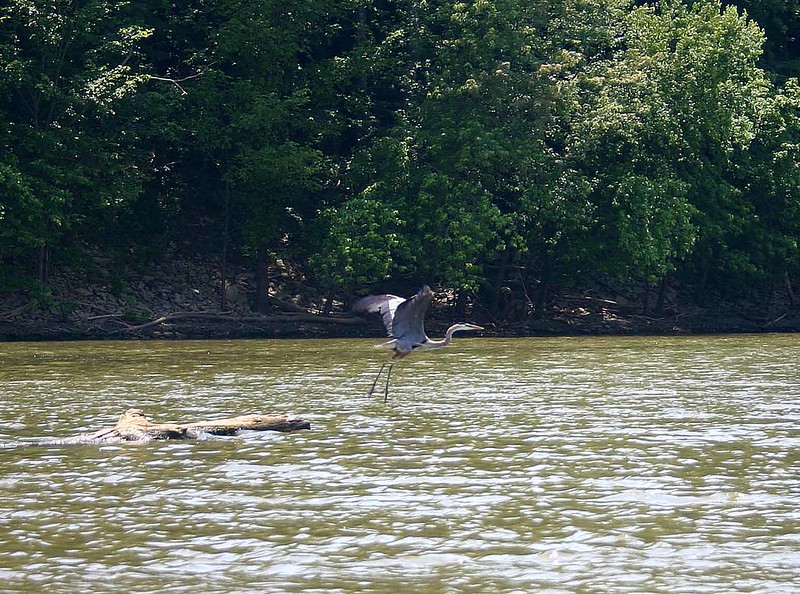General Information
.jpg?ver=ReNZUrfqk6uAW39AzK-0hw%3d%3d) The Army Corps of Engineers (USACE), Louisville District, is revising the Taylorsville Lake Master Plan. The Master Plan is intended to serve as a comprehensive land and recreational management plan with a life span of 25 years. It guides the stewardship of natural and cultural resources and the provision of outdoor recreation facilities and opportunities to ensure sustainability of federal land associated with Taylorsville Lake.
The Army Corps of Engineers (USACE), Louisville District, is revising the Taylorsville Lake Master Plan. The Master Plan is intended to serve as a comprehensive land and recreational management plan with a life span of 25 years. It guides the stewardship of natural and cultural resources and the provision of outdoor recreation facilities and opportunities to ensure sustainability of federal land associated with Taylorsville Lake.
About Taylorsville Lake
Taylorsville Lake was authorized under the Flood Control Act of 1966. The Louisville District of the U.S. Army Corps of Engineers designated, built and now operates the project for flood control, quality water storage, outdoor recreation, and fish and wildlife preservation and enhancement. Taylorsville Lake is located on the Salt River beginning at river mile 78 about 5 miles west of Glensboro and extends downstream to the dam at river mile 60. The Lake is 18 miles long and extends into portions of Spencer, Nelson and Anderson Counties of Kentucky. The dam is located about 20 miles from Exit 23 on the Gene Snyder in Louisville and about 50 miles from southwest Lexington.
 What is a Master Plan?
What is a Master Plan?
A Master Plan is the document that conceptually establishes and guides the orderly development, administration, maintenance, preservation, enhancement, and management of all natural, cultural, and recreational resources of a Corps water resource project. A Master Plan is a land use management document. It is focused on the operations and maintenance of an existing project and is no longer a “new project” document. Master Plans do not include water management operations and associated prime facilities (dam, gates, powerhouses, spillways, etc.). Of critical importance is the need to emphasize that a Master Plan is stewardship driven and must seek to balance recreational development and use with protection and conservation of natural and cultural resources.
Why do we need a new Master Plan?
The current Taylorsville Lake Master Plan was completed in 1978, and have been used as guide for recreational and environmental stewardship decisions. The Plan and the land classifications are in need of revision to address changes in regional land use, population, outdoor recreation trends and USACE management policy. Key topics to be addressed in the revised Master Plan include revised land classifications, new natural and recreational resource management objectives, recreation facility needs and special topics such as invasive species management and threatened and endangered species habitat. Public participation is critical to the successful revision of the Master Plan.
Public Involvement in Master Planning Process
Public participation will be a priority in the current Master Planning process. We will be seeking public input from key stakeholders and partners. In addition, open houses or public meetings will also be utilized to gather input from the general public. We really want to know what you want, what your vision is for the future management of recreation and environmental stewardship programs might be, etc.
Master Plan Classification
 The master plan identifies classification (i.e. zoning) for the lakes. Public lands are allocated and classified into management categories which, based upon resources available and public needs, will provide for full utilization while protecting project resources. This zoning determines what types of development are permitted – for instance campgrounds are permitted in intensive use areas but not wildlife management zones. The original Master Plan used slightly different zoning terminology than the new plan will use and also included detailed construction diagrams for campgrounds, picnic areas etc., and this level of detail will not be outlined in the new plan.
The master plan identifies classification (i.e. zoning) for the lakes. Public lands are allocated and classified into management categories which, based upon resources available and public needs, will provide for full utilization while protecting project resources. This zoning determines what types of development are permitted – for instance campgrounds are permitted in intensive use areas but not wildlife management zones. The original Master Plan used slightly different zoning terminology than the new plan will use and also included detailed construction diagrams for campgrounds, picnic areas etc., and this level of detail will not be outlined in the new plan.
We will again re-assess the project’s environmental attributes, public needs, etc. but will not be producing detailed site designs. Instead the focus will be on gathering public input and developing detailed natural resource inventories to guide in reassessing the future recreational needs and desired future conditions for natural resources.